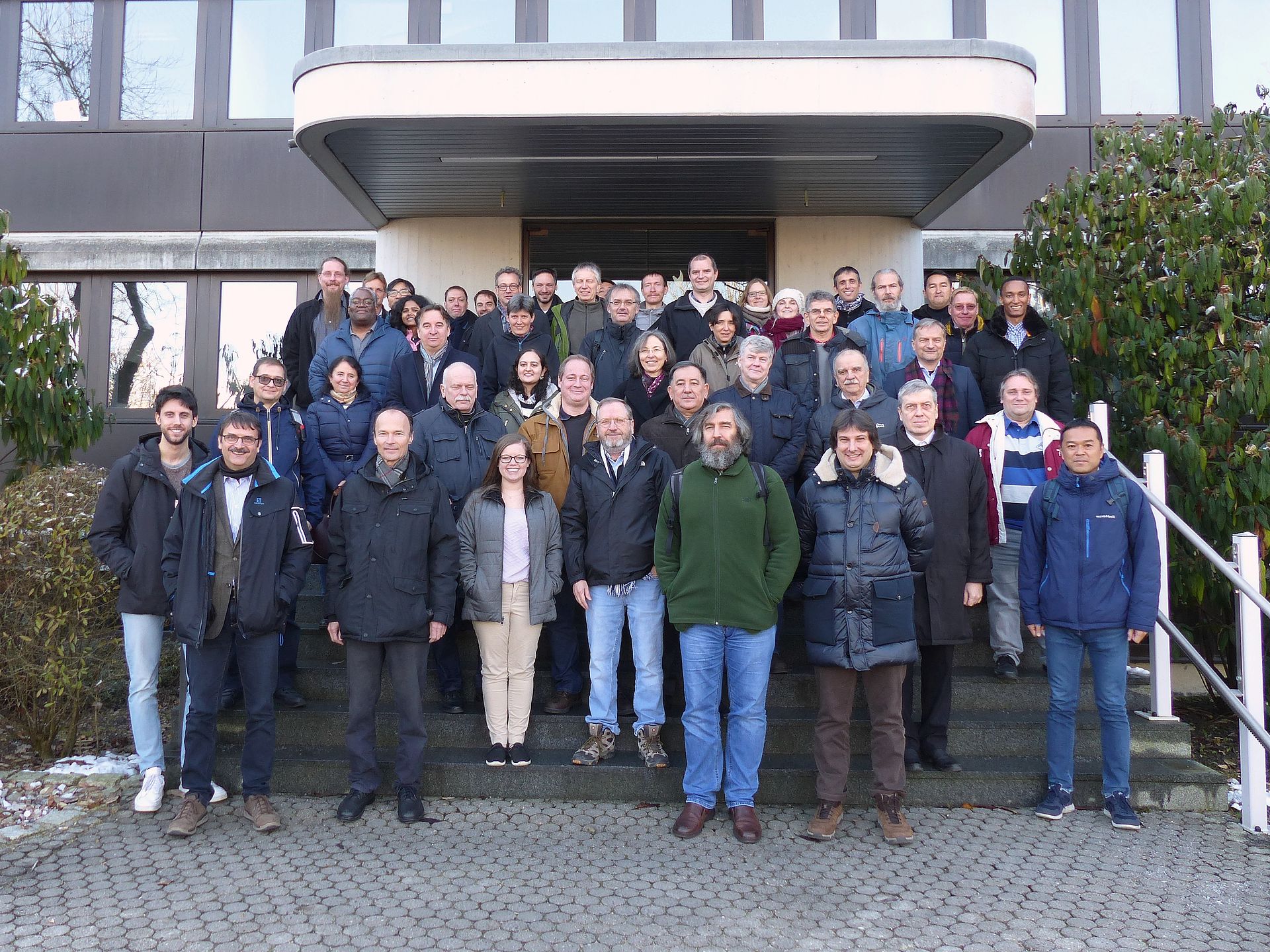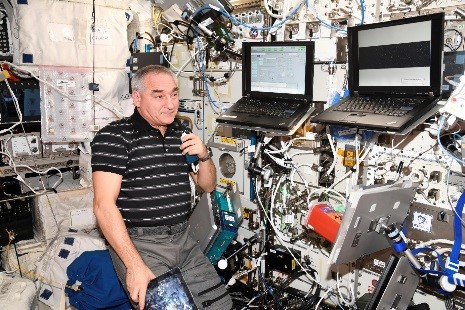Oberpfaffenhofen, December 6, 2019. Three-dimensional complex plasmas in space were the subject of a scientific conference held on December 5 and 6 at DLR’s Oberpfaffenhofen site near Munich. The 60 participants discussed the scientific results of the “PK-4” plasma laboratory, which has been on board the International Space Station ISS for the past five years and in which OHB System AG is playing a key role. The results after the eighth mission of the plasma laboratory were consistently seen as positive.
“Even after five years, we are still gaining new insights. PK-4 is a multi-purpose laboratory that allows a large community of users to carry out a very broad range of research activities that is far from being exhausted,” explains Dr Hubertus Thomas, who heads the Complex Plasmas Group of the Institute of Materials Physics in Space at the German Aerospace Center (DLR) and is responsible for scientific work with PK-4 on the German side. “The live data stream available to us at the control center in Toulouse during the execution of the experiments provides us with initial information about the success of the experiments.”
“Our plasma laboratory has proved its worth again in its eighth mission,” says Roland Seurig, PK-4 Project Manager at OHB-System AG. “One highlight is the close cooperation between the cosmonauts on board the space station and the scientists in the control room, thus ensuring that the best results are achieved.” In addition to the PK-4 research laboratory permanently installed in the Columbus module, the Russian cosmonaut Aleksandr Skvortsov was the main player in space. From the CADMOS ground control center in Toulouse, OHB employees also actively supported the work carried out from November 8 to 14, 2019 as part of an ESA mission.
In the fourth state of matter
Plasma is the fourth state of matter alongside solid, liquid and gaseous states. Plasmas are charged, i.e. electrically conductive gases. In space, more than 99 percent of all visible matter (stars, gas clouds, etc.) is in this state of matter. Here on Earth, we experience plasmas as lightning and also as artificially produced matter in fluorescent tubes or plasma televisions. Complex plasmas1) can be studied the best if they float freely in space and are not limited to a few lattice planes. This is why research has been conducted into plasma crystals2) on board the ISS since 2001. PK-4 is the third ISS plasma laboratory designed by OHB System AG for research on board the ISS.
PK-4 findings can be used in a variety of different ways
“Through our research work on complex plasmas, we want to gain new insights into the physics of condensed matter and find answers to various astrophysical questions. Complex plasmas can be used as model systems in crystallography, the physics of liquids and gases or in nanotechnology,” explains Dr. Thomas. “As well as this, the technological know-how gained may also pave the way for future applications for plasma technology in microchip production or in medicine.”
PK-4 enables a systematic investigation of how microparticles behave in complex plasmas. It produces plasma crystals in a glass tube filled with inert gas by means of a direct current discharge. PK-4 has been designed to investigate the liquid phase of complex plasmas at a kinetic level. The focus is on the investigation of flow properties (such as turbulence) in microparticle clouds. It is looking at self-organizing effects such as chain and lane formation, segregation, vortex formation and synchronization.
OHB playing a double role
In a contract for ESA, OHB has been responsible for all system tasks for the PK-4 permanent plasma research laboratory and has developed and assembled two rack modules for power supply, communications and data recording (140 MB/s of digital data and digital videos). OHB also implemented a large part of the mechanical structure, particularly the experiment container, as well as the control and operating software.
PK-4 is housed in the EPM (European Physiology Module) rack of the European Columbus research module, for which OHB is also responsible and makes sure that PK-4 is supplied with sufficient power and is cooled properly. The EPM ground infrastructure ensures that the experiments can be controlled from the ground and that the data is made available to the researchers.
PK-4 partner
PK-4 is a project of the European Space Agency ESA and the Russian Space Agency ROSKOSMOS, in which the scientific leadership lies with the Complex Plasmas Group of the DLR Institute for Material Physics in Space (formerly the Max Planck Institute for Extraterrestrial Physics, MPE) and the Russian Academy of Sciences (Joint Institute for High Temperatures, JIHT). The PK-4 research laboratory was developed and implemented by OHB System AG in conjunction with MPE. Additional funding in Germany was provided by DLR Space Administration and the Max Planck Society.
1. Complex plasmas are plasmas composed of ions, electrons, neutral gas and microparticles. The electrostatic interaction of the highly negatively charged microparticles reveals a wealth of interesting phenomena.
2. The microparticles are evenly arranged in plasma crystals. However, a plasma crystal can also melt and a complex plasma can flow like a liquid if the electric field and the gas pressure are modified accordingly.

Contact for media representatives:
Marianne Radel
Head of Corporate Communications
Phone: +49 421 2020 9159
Email: marianne.radel@ohb.de
Contact for investors and analysts:
Marcel Dietz
Investor Relations
Phone: +49 421 2020 6426
Email: ir@ohb.de


